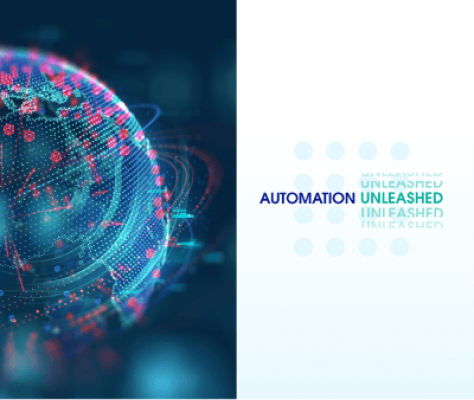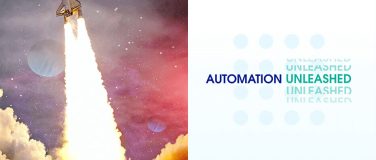The pandemic changed the entire business landscape over a short time period. Customers now expect digital experiences by default. Leaders expect data at their fingertips. Employees expect to work remotely. How did everyone’s expectations change so quickly?
There were a number of factors. The urgency of the pandemic gave most companies clear priorities, business and IT teams worked together to meet new demands, and transformation timelines were compressed from years into months.
But there is fallout from these Herculean efforts. All that work met the immediate needs of the business, but much of it required papering over and even building new dependencies on already old, brittle technologies. IT organizations now find themselves in a bind. Their business counterparts are asking for more, fueled by increased customer demands and the speed of innovation happening in the market.
At the same time, the complexity of the IT landscape continues to grow. Initiatives to retire technical debt were put aside for more pressing initiatives during the pandemic, and more technical debt was layered on with quick fix solutions. On top of these factors, current economic headwinds are now putting constraints on IT budgets, making it hard to meet these new business demands. In short, IT is being asked to do more with less.
Bridging the business-IT divide with workflow automation
Although IT teams and their business partners came together effectively during the pandemic, they had to cross over a widening gap to do so. In fact, this gap is widening even more with increased expectations and demands.
As a business is pressured from disruptors in the market to deliver digital capabilities more quickly, the IT team struggles to keep up given that they don’t have enough time or budget. And as they refactor their aging systems, they must dedicate precious resources to maintenance rather than creating innovative new capabilities. Both IT and business teams want the same things: digital innovation and efficient growth, but are held back due to resource constraints.
The good news is that while many companies had to drop everything and deal with the business crisis brought on by the pandemic, technological innovation continued. In particular, there was a tremendous amount of innovation in automation technology – a category whose purpose has always been about doing more with less.
From power looms for weaving textiles to assembly lines to ATMs, every era of business has been characterized by new forms of automation. In the current digital era – whose arrival was cemented by the pandemic – a variety of new automation capabilities has emerged, including robotic process automation (RPA), integration platform-as-a-service (iPaaS), and low-code/no-code development tools.
Known as hyperautomation by some and intelligent automation by others, this collection is made possible by the abundant data, sophisticated software, and network ubiquity resulting from 30 years of post-web technological evolution.
These new capabilities allow organizations to overcome limitations of automation from previous eras, and provide strong solutions that fit the needs and expectations of the digital age. One of the biggest challenges organizations face today is a shortage of workers and a shortage of skills. IT teams have been unable to deliver digital solutions at the pace demanded by their business partners. This new breed of automation technologies not only drives productivity through business process automation, their low-code nature means they empower those business partners to become digital builders themselves.
This increases the digital delivery capacity of the organization overall, and frees up IT to focus on more deeply technical engineering. As a result, many organizations are rethinking their organizational structures; redrawing the boundaries to create fusion teams of business specialists and IT professionals who build products.
Accessible automation that plays nice with IT
It’s not a new phenomenon for teams outside of IT to try their hand at building automated solutions to run the business. These efforts – whether sanctioned by IT or not – often created disparate islands of desktop-based spreadsheets and databases that were hard to find and harder to manage.
The new generation of automation technologies allows people across the organization to be involved in building solutions, but can also provide line of sight to IT so that those solutions play nice in the broader IT landscape, and can be managed proactively and consistently. This minimizes the risk of unforeseen disruptions resulting from new automations and reduces technical debt.
As accessible and consumable as these new automation tools are, they are also more flexible and robust than previous technologies. Machine learning and cross-enterprise integration allow for a much higher degree of contextualization for automations. This allows for more personalized customer experiences, more adaptable solutions, and much more resilient exception handling.
In the past, automated processes might flow smoothly as long as everything followed the happy path, but any sort of hiccup would require manual intervention. That’s no longer the case. A deeply-connected automation foundation allows for much more situational awareness and reactivity.
These same foundational elements allow for the automation of automation itself. Rather than having to manually code processes, these new automation tools allow processes to be recorded from live execution or intuited from metadata in the system.
MuleSoft unleashes digital agility through automation
MuleSoft provides the foundation for this new breed of automation capabilities. We provide the backbone for countless automations in the business world’s most innovative organizations, companies like IQVIA and Bayer.
Our low-code tools empower users across the organization to automate and become digital builders, while giving IT teams universal visibility and governance across the full enterprise landscape. Our composable approach to automation allows our customers to solve today’s automation challenges, while speeding up and lowering the cost of future solutions. We don’t just help companies automate, we make automation the on-ramp to true digital transformation.
It may be hard to remember what the business world looked like before the pandemic, but we know what’s needed now: tools and technologies that help organizations do more with less. We are in a new era of automation, and MuleSoft is excited to be your guide.
In this new blog series, Automation Unleashed, we’ll share best practices, strategies, and real stories that will help you thrive. Stay tuned, keep reading, and you’ll find that the right choices will start coming to you automatically.









